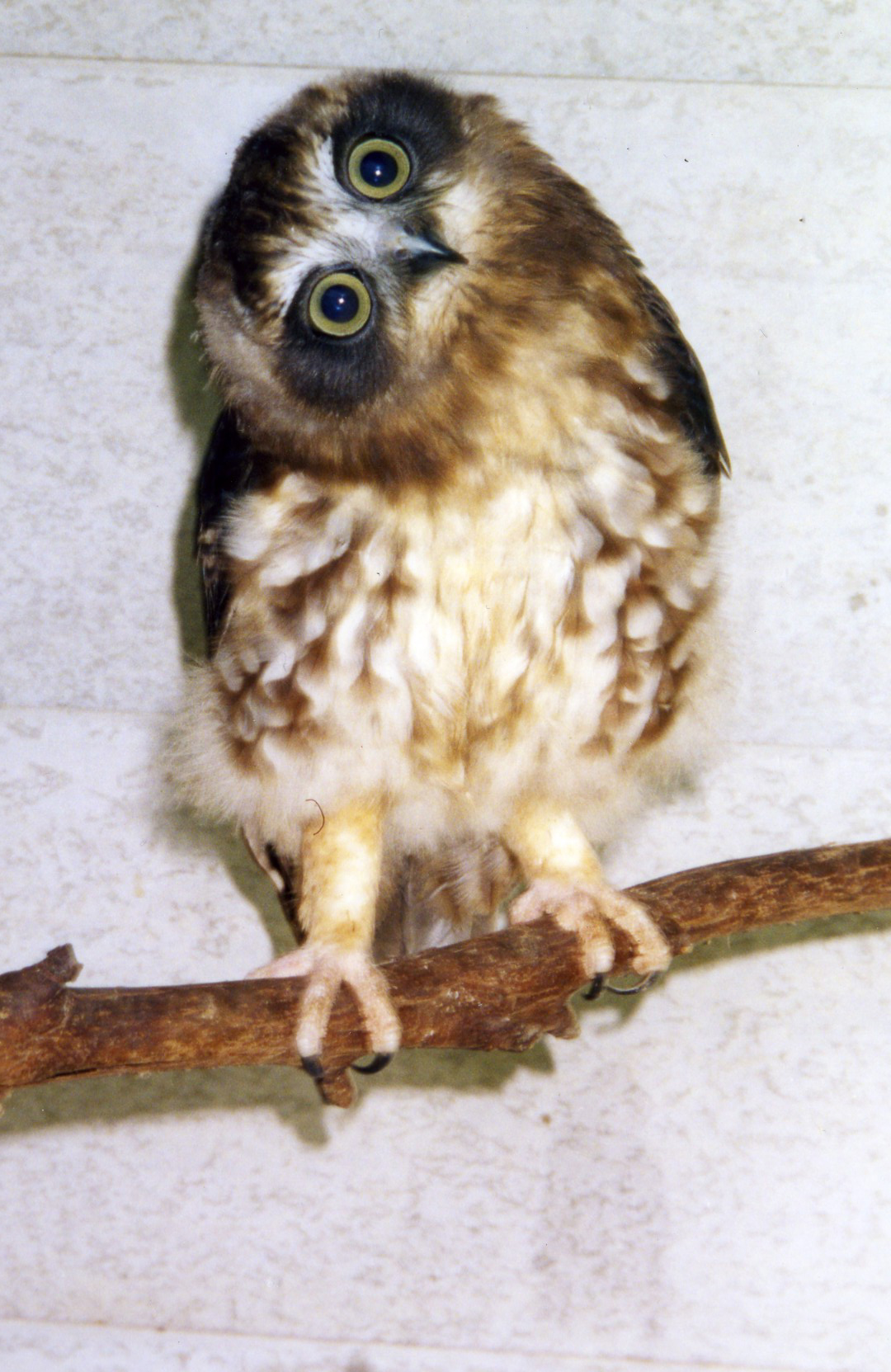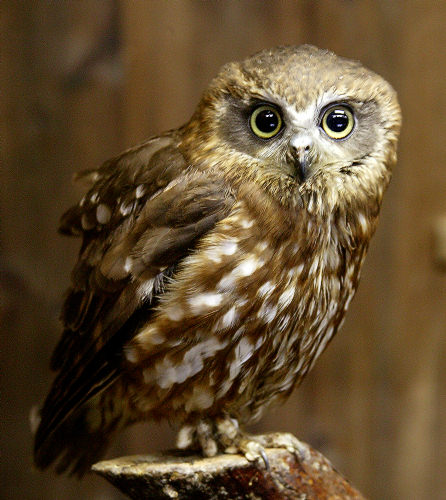
Ninox boobook
SUBFAMILY
Surniinae, Tribe Ninoxini
TAXONOMY
Strix boobook Latham, 1801, Sydney area, New South Wales.
Tentatively, ten subspecies are recognized.
OTHER COMMON NAMES
English: Boobook owl, streaked boobook, northern boobook,
Australian boobook, red boobook, dark boobook owl; French:
Ninoxe d’Australie; German: Boobookkauz; Spanish: Nмnox
Australiano.
PHYSICAL CHARACTERISTICS
9.8–14.2 in (25–36 cm). Female, 11.1 oz (315 g). Male, 8.8 oz
(250 g). This owl takes its name for its most common call, a
repeated double hoot that sounds like “boo-book.” It has a
round head with an indistinct facial disc, white eyebrows, and
eyes that vary in color from yellow to hazel. Upperparts are
dark brown with white spots. Underparts are whitish with reddish
brown streaks and spots.
DISTRIBUTION
Australia, southern New Guinea, Roti, Timor, Alor, Let, Moa,
Babar, and Kai Islands.
HABITAT
Very varied habitat, including dry and wet forests, semi-arid
deserts, and farmlands.
BEHAVIOR
Mainly sedentary. The most southern races may winter farther
north. Largely nocturnal, but partly crepuscular.
FEEDING ECOLOGY AND DIET
Mainly insectivorous, but also takes small birds, mammals, reptiles,
and bats, especially during the breeding season. Hunts
from a perch in forest clearings and edges.
REPRODUCTIVE BIOLOGY
Nests in cavities, both natural and in man-made structures.
Lays three to five eggs. Incubation is about 30 days. Chicks
fledge at about five weeks. Young stay with parents for up
to three months after fledging.
CONSERVATION STATUS
Not globally threatened. Widespread and generally common
throughout most of its range, but vulnerable to habitat
destruction that destroys preferred nesting sites in tree
hollows.
SIGNIFICANCE TO HUMANS
None known.
Other popular Animals
Photo Gallery of - Southern boobook owl




 Animalia Life
Animalia Life